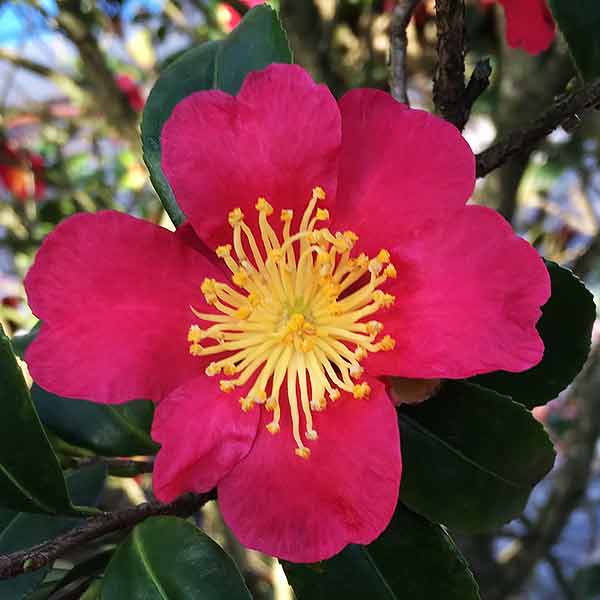
With smaller gardens and courtyards, naturally small growing camellias make a better choice that the larger growing types.
And for growing in containers they are also the logical choice.
None are really natural dwarf types however, a few Camellia are naturally small growing.
By small we are looking at 2 metres (6ft) or less, or at least those that can be pruned to this size fairly easily.
Most of these are the smaller leafed sasanqua types.
List of Small Growing Camellias
- The two very low growing types are ‘Marge Miller’ and ’Snow’ both classed as ground cover plants and reaching around .5 metre in height.
- Quintessence is another very low growing variety, white flowers blushed with pink and a really nice plant, however not readily available for sale.
- Some naturally smaller growing types can be found in the Paradise ‘Petite’ series. This includes a pink flowering variety and a two White flowering types that will get to around 1.5 metre in height.
- Floribunda ‘It’s Gorgeous’ Pink flowering will get to around 2 – 3 metres but can be pruned to less than this
- Yuletide is a sasanqua type with bright red flowers ad a good boss of contacting yellow stamens.
- Bonsai Baby – Pink to purple to 2- 3m easy to prune to around 1.5m
- Camellia sasanqua ‘Shishigashira’ can be pruned to around 1.5 metres and slow 1.2m over 20 years. short internodes
- Camellia sasanqua Otome Sazanka is another that prunes well to around 1.5 metres
- Camellia sasanqua ‘Mine-No-Yuki‘ is a favourite, white flowers and again can be pruned to around 1.5 metres
- Bob Hope is a very slow growing variety taking up to 20 years to get to 2 metres
Planting Camellias
- Prepare the soil by digging over well, adding compost and aged cow manure. Make sure the area is weed free.
- Be aware of planting distance, as a specimen tree, your small camellia needs adequate space to grow naturally.
- If planting as a hedge, small camellias like Slim’N’Trim can be planted at around 2/3 of a metre apart.
- The planting hole should be 2 -3 times the diameter of the pot. This means the soil around is properly prepared, loose and ready to encourage new root growth.
- Plant and water in well with a liquid seaweed fertiliser.
- Mulch around the plant to maintain. A cool moist root run.
- Water well through the first summer.
- Fertilise in spring.
